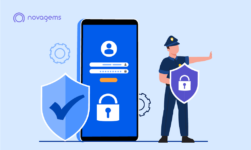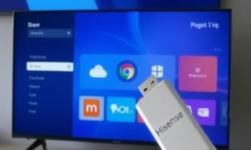
In today’s interconnected world, a Virtual Private Network (VPN) is essential for maintaining privacy, Troubleshooting Steps security, and unrestricted access to content worldwide. However, after you buy VPN, encountering issues with your Japanese VPN can be frustrating, especially when you need seamless connectivity.
This comprehensive guide will walk you through 5 effective troubleshooting steps to resolve common VPN problems after you buy a VPN, ensuring you get back to browsing easily.
1. Verify Your Internet Connection
Before diving into complex troubleshooting, ensuring your internet connection is stable is crucial. A weak or unstable connection can often be the root cause of VPN issues.
Steps to Verify Your Internet Connection
Here are 3 quick steps to verify a speedy internet connection:
- Restart Your Router: Turn off your router, wait for 30 seconds, and then turn it back on. This can often resolve temporary connectivity issues.
- Check Network Settings: Ensure that your device is connected to the correct network and that there are no network conflicts.
- Run a Speed Test: Use online tools like Speedtest.net to check your internet speed. If your speed is significantly lower than expected, contact your Internet Service Provider (ISP).
2. Ensure Your VPN App is Up-to-Date
Outdated VPN software can lead to various issues, including connectivity problems. After you buy VPN, keeping your VPN app updated ensures that you have the latest security patches and bug fixes.
If you’ve switched off automatic updates, then head to the Google Play Store or Apple App Store to check for updates to the Japanese VPN app. Update the app if there are any.
How to Update Your VPN App
Once you buy VPN, you must also regularly update it. Here’s a brief breakdown of how you can update your VPN app:
- Visit the Official Website: Go to the VPN provider’s website to check for updates or new versions.
- Automatic Updates: Enable automatic updates in your VPN app settings to receive the latest updates without manual intervention.
- Reinstall the App: If updating doesn’t resolve the issue, try uninstalling and reinstalling the VPN app to ensure a clean installation.
3. Check the VPN Server Status
Sometimes, the issue may not be on your end. VPN servers can experience downtime or maintenance, leading to connectivity issues.
How to Check VPN Server Status
Whichever should provide various servers for every location; if one of the servers is down, it’s best to connect to another one. Here are 3 ways to check your VPN server connection:
- VPN Provider’s Status Page: Visit your VPN provider’s website to see if there are any announcements regarding server status or maintenance.
- Switch Servers: Try connecting to a different server location within Japan. If the problem persists, attempt connecting to servers in nearby regions.
- Customer Support: Contact your VPN provider’s customer support for real-time information on server status and alternative server suggestions.
4. Configure Your VPN Settings
Incorrect VPN settings can cause connectivity issues. Ensuring that your VPN is configured correctly can resolve many problems.
Steps to Configure Your VPN Settings
Despite how technical it may sound, manual VPN configuration is only a five-finger exercise. Here’s how to configure the VPN settings:
- Check Protocol Settings: VPNs offer different protocols, such as OpenVPN, L2TP/IPsec, and IKEv2. Try switching between these protocols to see if it resolves the issue.
- DNS Settings: Use the VPN provider’s DNS servers instead of the default ones provided by your ISP. This can be configured in the VPN app settings.
- Firewall and Antivirus Settings: Ensure your firewall or antivirus software is not blocking the VPN. Add the VPN app to the list of exceptions or allowed programs.
5. Clear Cache and Cookies
Sometimes, your browser’s cache and cookies can interfere with VPN connectivity, especially when trying to access geo-restricted content.
How to Clear Cache and Cookies
Here are 3 quick methods for clearing the browser cache and cookies:
- Browser Settings: Go to your browser settings and find the option to clear browsing data.
- Select Cache and Cookies: Choose to clear cache and cookies. Make sure to select the appropriate time range (e.g., last 24 hours, last 7 days).
- Restart Browser: After clearing the cache and cookies, restart your browser and try connecting to the VPN again.
Advanced Troubleshooting Tips
If the above steps do not resolve your VPN issues, consider these advanced troubleshooting tips:
- Reboot Your Device: A simple restart of your device can resolve many software-related issues.
- Disable IPv6: Some VPNs are not fully compatible with IPv6. Disable IPv6 on your device to see if it improves connectivity.
- Use a Different Device: Test the VPN on a different device to determine if the issue is specific to your current device.
- Check for Updates: Ensure your operating system and network drivers are up-to-date.
- Consult Forums and Communities: VPN provider forums and online communities can be valuable resources for troubleshooting tips and solutions shared by other users.
Final Note
By following these detailed troubleshooting steps, you can effectively resolve most issues with your Japanese VPN, ensuring uninterrupted and secure access to your desired content. Maintaining a stable internet connection, keeping your VPN app updated, and configuring your settings correctly are key to a smooth VPN experience.





